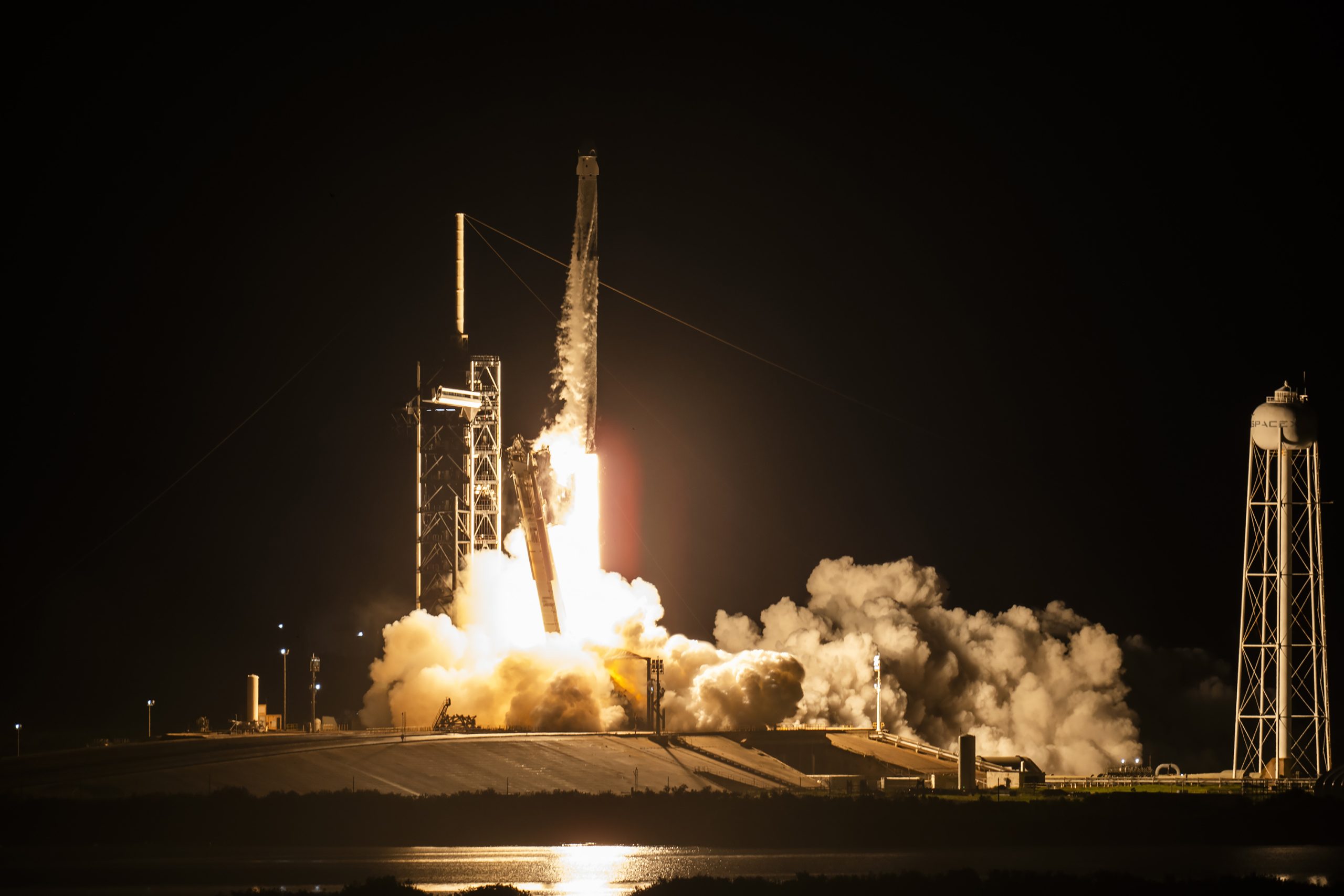California: In a monumental leap for space exploration, SpaceX launched the Polaris Dawn mission aboard its Falcon 9 rocket from the Kennedy Space Center in Florida on Tuesday. This mission marks a significant milestone in commercial spaceflight, with plans for the first-ever spacewalk conducted by a commercial crew.
The five-day mission will push boundaries, aiming to reach the highest Earth orbit ever achieved by a crewed Dragon spacecraft. The Polaris Dawn crew will attempt to fly higher than any previous SpaceX Dragon mission, targeting a record-setting apogee of 1,400 km. This altitude is the highest humans have traveled in Earth’s orbit since the Apollo program ended over 50 years ago.
In addition to the spacewalk, the crew will also test Starlink’s laser-based communications technology in space for the first time. This mission will further cement the role of SpaceX’s Starlink network in advancing space communications.
After launch, Falcon 9 placed Dragon in an elliptical orbit of 190 x 1,200 km, where it will orbit the Earth eight times before boosting its altitude to 1,400 km. Following six orbits at this unprecedented height, Dragon will lower itself back to a 190 x 700 km orbit to prepare for the spacewalk.
The mission is led by Jared Isaacman, a 41-year-old billionaire and pilot who previously funded and commanded the Inspiration4 mission in 2021. The Polaris Dawn mission is the first of three planned as part of Isaacman’s Polaris program, which will also include a future Crew Dragon mission and a flight aboard SpaceX’s Starship rocket.
Joining Isaacman on this mission are Scott Poteet, a retired U.S. Air Force lieutenant colonel, and two SpaceX engineers, Sarah Gillis and Anna Menon. Isaacman and Gillis are scheduled to perform the spacewalk, tethered by oxygen lines, while Poteet and Menon will remain inside the spacecraft.
The crew will also engage in a series of scientific experiments aimed at studying the effects of space on the human body. These experiments build on decades of research conducted by astronauts aboard the International Space Station.
While the exact cost of the Polaris Dawn mission remains undisclosed, it is expected to run into the hundreds of millions of dollars, underscoring Isaacman’s significant financial backing for advancing commercial space exploration.





